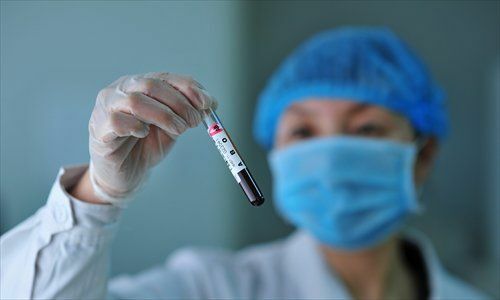Many in vain underestimate the seriousness of such a disease as sand in the kidneys. This pathology is quite dangerous, in the absence of treatment leading to serious pathologies such as urolithiasis with the formation of kidney stones. Therefore, the presence of small stones( microliths) requires compulsory medical intervention. A similar pathological phenomenon occurs in patients of any age, and in recent years it has often been diagnosed in children. The pathology is completely curable, so stone formation can be prevented. To do this, it is necessary to remove sand from the body and take preventive measures regarding its re-formation.

The causes of microliths
There are many factors leading to the appearance of sand, but most often the disturbed material exchange caused by heredity or wrong way of life is fundamental. With an incorrect water-salt exchange, the urine composition begins to contain an excessive amount of salts, leading to the formation of minute crystals.
Common causes are:
- Endocrine disruptions;
- Presence of chronic infectious pathologies;
- Incorrect diet containing excessive amounts of protein or spicy food;
- Intoxication;
- Insufficient fluid intake;
- The presence of pathologies of the urinary and reproductive system;
- Abuse of drinking water containing an excessive amount of minerals;
- Pregnancy;
- Insufficient motor activity( hypodynamia);
- Bad ecology.
In fact, the formed sand in the kidneys can have quite a lot of reasons. If you drink enough liquid, you can significantly slow down the stone-forming processes. Surpluses of salt in the kidneys crystallize imperceptibly, manifesting themselves only when the microliths begin to emerge upon urination.
Important! The formation of sand can begin due to a violation of the urine flow or long-term abuse of certain medications such as ascorbic acid, etc.
Kidney sand is more often formed in people whose work is carried out in overly hot shops or premises, as well as those living in countries with too hotclimate. Long-term abuse of mineral water or consumption of too hard drinking water also leads to the formation of calculi in the kidneys.
Symptoms of sand
Sand in the kidneys, as a rule, does not cause discomfort in the patient. Characteristic symptoms occur only during the release of sand. When passing through the urinary tract, microlites irritate the mucous cover, causing painful sensations, feeling of rez and burning at the time of urination, and urine may contain impurities of blood. In general, the clinical picture of the presence of stones in the kidneys consists of such manifestations:
- Sudden clouding or staining of urine in a dark color, sometimes with bloody impurities, and in severe cases, the presence of pus contaminants in the urine;
- Rezi, itchy sensation, burning and other problems with urination, provoked by irritating action of sand. When microliths begin to move along the urinary tract, they can narrow the lumen, which will lead to difficulty urinating or its inability to block the ureter;
- The onset of an intense pain syndrome in the lumbar region or renal colic. Similar signs are associated with irritation on mucous membranes. With the further development of pathology, soreness can begin to irradiate to the area of the upper abdomen or to the groin. Pain caused by sand in the kidneys is characterized by unilateral localization;
- In rare cases, renal calculi can trigger an increase in overall temperature, nausea, or increased blood pressure.
Against the background of kidney damage, their functions are weakened, as a result, substances that exert toxic effects on the body as a whole and GIT organs in particular accumulate in the blood, which is manifested by frequent attacks of nausea and vomiting.
Possible therapies for
The therapeutic process is selected after a thorough diagnosis and reliable confirmation of the diagnosis. In general, microliths in the kidneys are treated in three ways: by medicines, by a medical diet and by surgery. Conservative therapy is effective only when the size of the sand particles does not exceed 0.4 cm. The surgical method is used only in the case of the ineffectiveness of a conservative approach to the treatment of pathology and involves the removal of sand by surgery.
Drug therapy
In the initial stages of the disease, kidney sand is treated with medications such as Phytolysin, Blomaren, Kanefron, Cyston, etc. This treatment involves several goals: cleansing the kidneys from accumulation of sand and symptomatic therapy. It should be said about them in more detail:
- Phytolysin is a remedy actively used by specialists to treat sand in any organ of the genitourinary system. It is also used in the complex treatment of renal pathologies of inflammatory nature and urolithic pathology;
- Kanefron is a diuretic and anti-inflammatory drug that can be taken from kidney microliths even by children or pregnant women, since its composition is represented only by natural components;
- Cyston - due to its spasmolytic and diuretic effects, the drug is widely used in the treatment of kidney sand.

Before prescribing the medication, the patient must undergo ultrasound examination, with the goal of detecting concrements that clog the urinary tract. If the patient suffers from sand of urate origin, formed at elevated concentrations of uric acid, which is most characteristic of gout, he is prescribed Allopurinol. This drug prevents the further formation of renal microliths. Sometimes it is replaced by Etamid, which reduces the urate concentration in the body.
Warning! The choice of the necessary drug is a responsible process, which the nephrologist should only deal with, since the drugs differ in their individual effectiveness, acting differently on patients.
Microliths of phosphate origin are not amenable to treatment with the help of dietotherapy, which provides for the exclusion of protein products from the diet. In the case of urate or oxalate origin of sand, Magurlite, which increases uric acidity, is often prescribed. And with the cystine origin of microliths, preference is given to Urolesan or Cyston, which exerts a lighter effect on urine, promoting the dissolution of sand.
As leaching of microliths is accompanied by pain syndrome, patients are prescribed antispasmodic and painkillers such as No-Shpa, Baralgina, Analgin, etc.
Medical food
You can get rid of sand not only with diuretics, spasmolytic drugs, but also carefully adjusting your daily diet. The therapy depends largely on the chemical composition of the sand. Sand urate or oxalate nature requires alkalization of the body. Therefore, patients are urged to minimize the consumption of cocoa, tomatoes, meat, milk, citrus, strawberries and chocolate, coffee and various salads, and increase the proportion of vitamins of plant origin in the diet.

In the case of the phosphate nature of kidney sand, on the contrary, the body needs to "acidify" urine. Such patients are recommended to include in the daily menu more meat dishes, cereals, sour-milk products and fish. But the consumption of vegetable, fruit dishes is recommended to be reduced.
Important! In the presence of sand, experts recommend to periodically spend days of kidney discharge, consuming a large number of watermelons, apples, cucumbers in combination with a plentiful drinking regime.
Regardless of the variety of the concrement and the stage of pathology, it is necessary to observe dietary rules that assume the exclusion of fried, spicy and smoked food, beans and meat products, alcoholic beverages or coffee from daily meals. Modern life often leads to the fact that patients simply forget about the importance of removing microliths from the kidneys. And they turn to the doctor already when there is a kidney colic.
Surgical treatment
Crushing or surgical removal is usually resorted to when the sand in the kidneys forms into large stones. Operative treatment can be carried out in several ways: lithotripsy( surgical or ultrasonic crushing) or an open operation such as nephrolithotomy or ureteroscopy. But such interventions are carried out only in especially neglected cases associated with suppuration, obstruction of the ureter lumen or too large stones.
In the presence of sand, therapy and prevention are closely intertwined, because diet therapy helps to get rid of microliths and is an effective preventative against the formation of kidney sand.
Prophylactic measures of this pathological condition are reduced to rational nutrition, active life and periodic examinations with a specialist. It should avoid hypothermia and strong drafts, because of which you can chill the kidneys. In addition, it is recommended to drink water that has been properly cleaned by a filter, do not abuse mineral waters.



